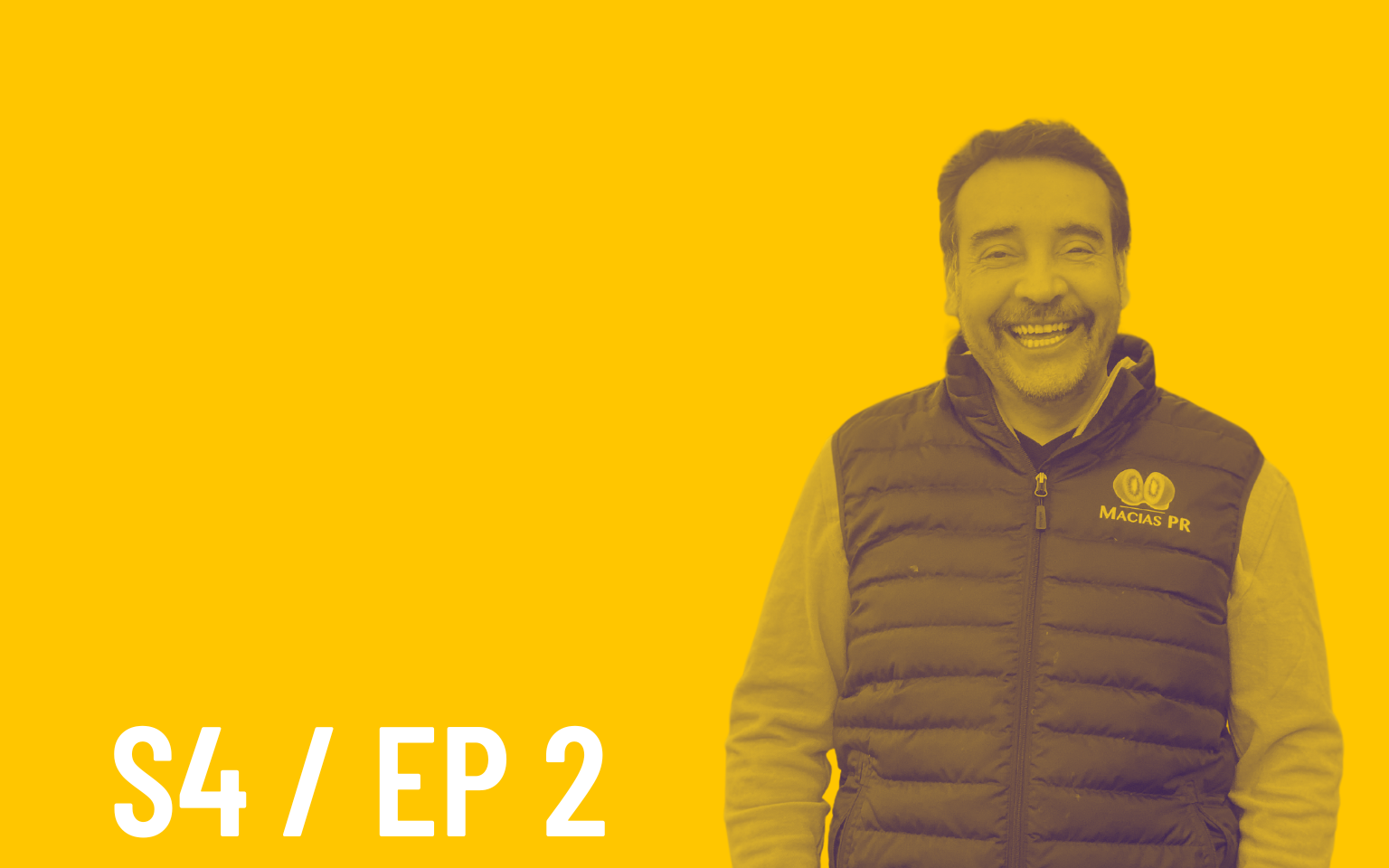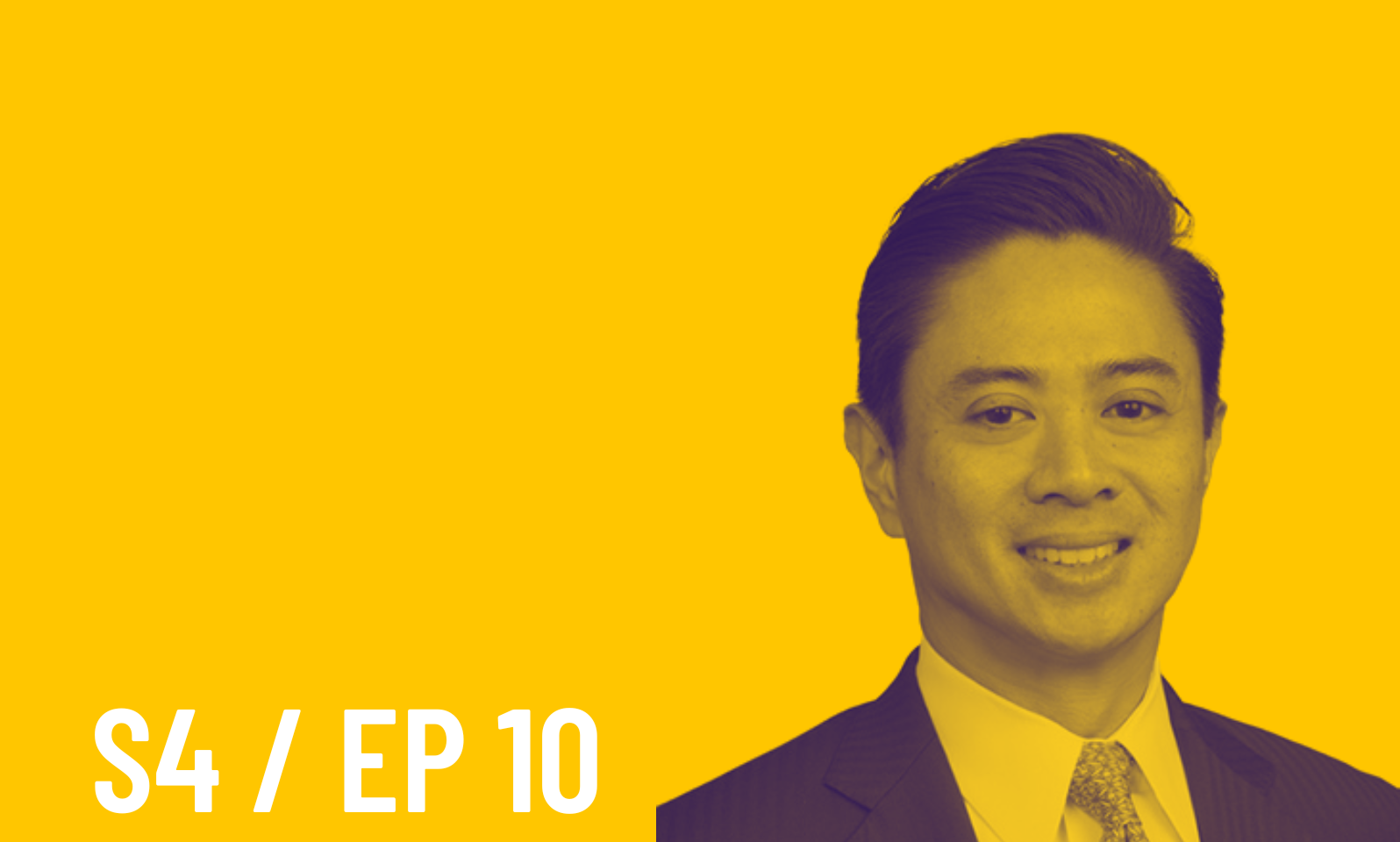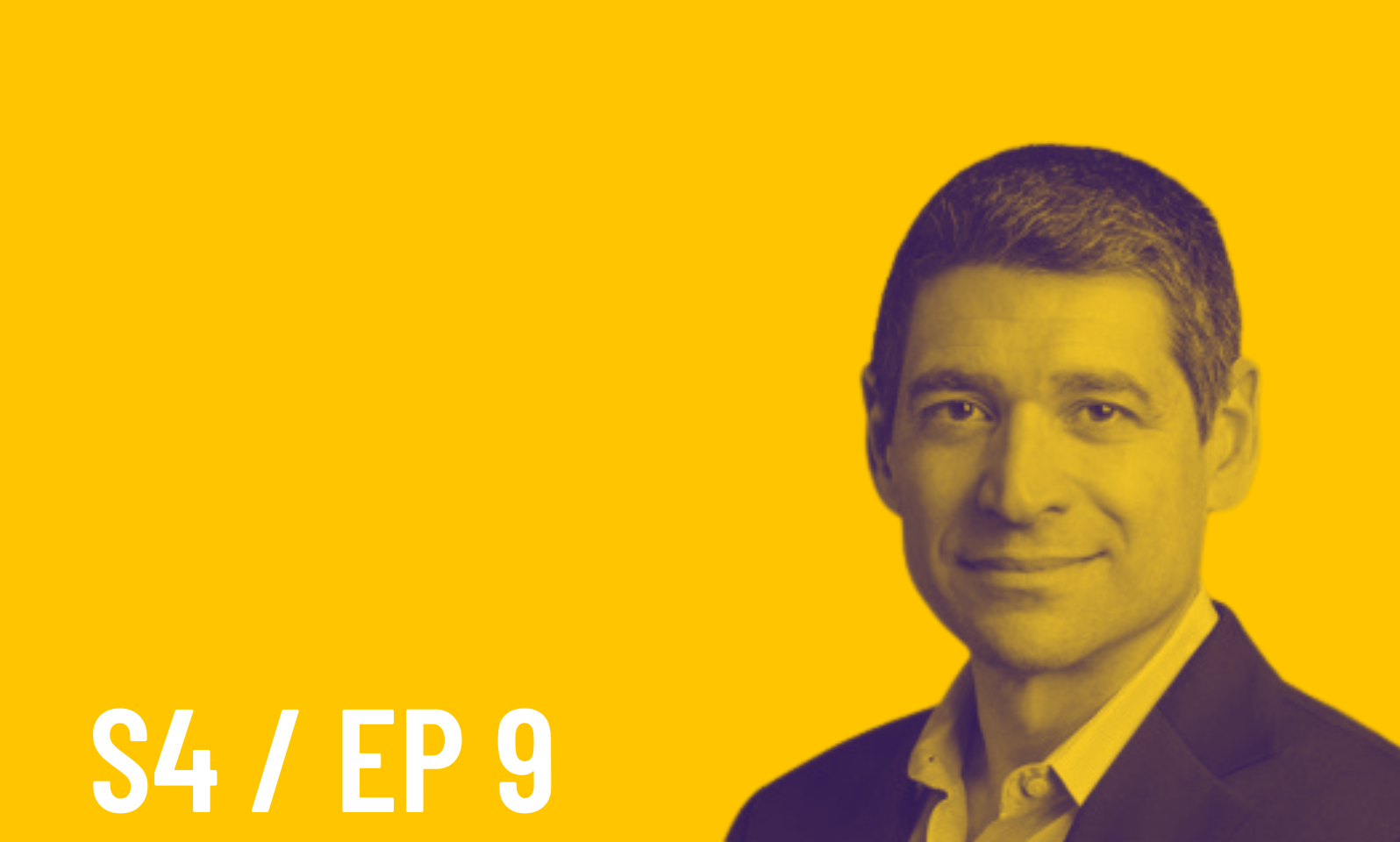From Dotcom Boom to Meetings on Zoom: HealthLeaders Media Editor Recaps Two Decades in Healthcare Reporting
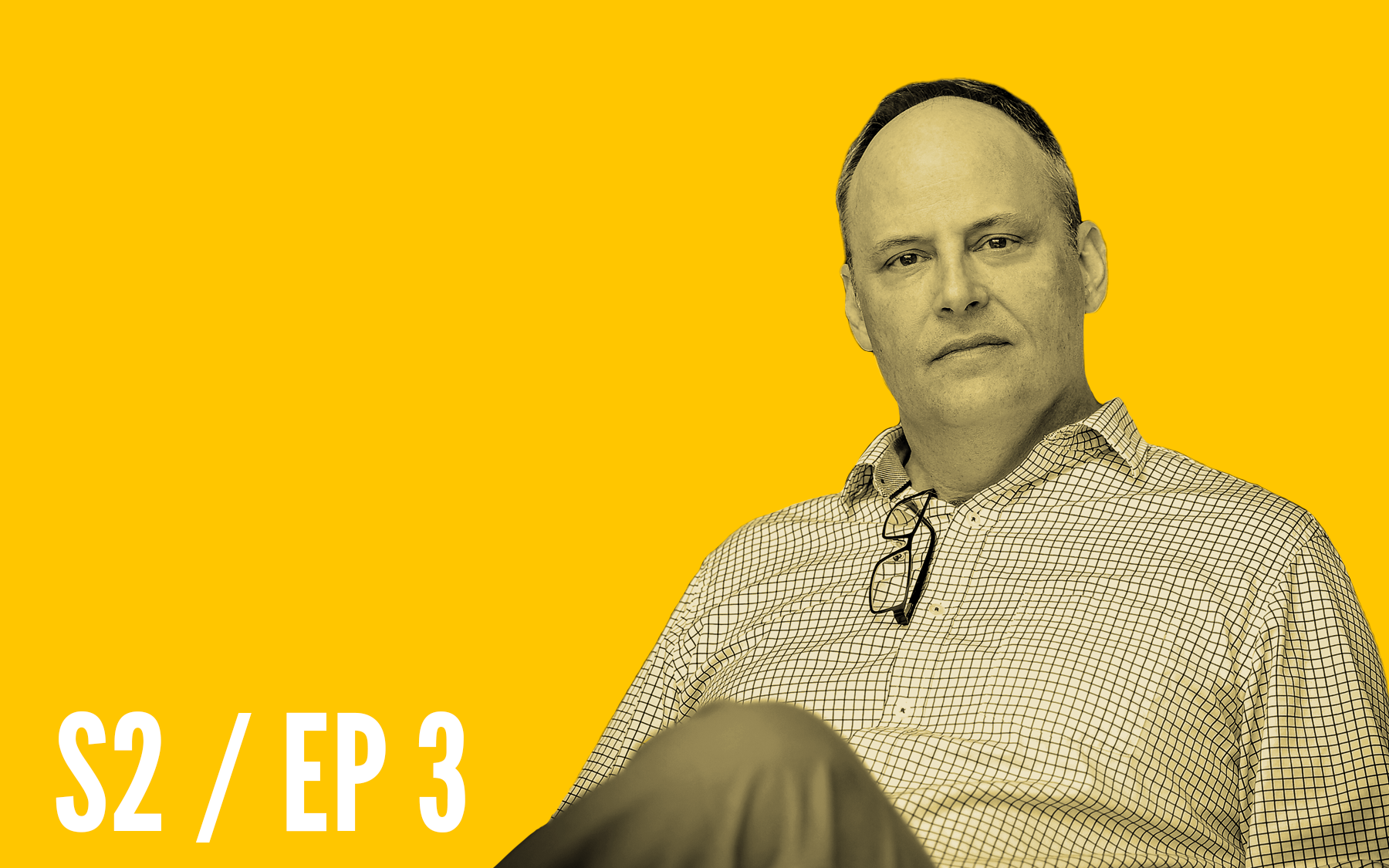
Episode 3, Season 2
From Dotcom Boom to Meetings on Zoom: HealthLeaders Media Editor Recaps Two Decades in Healthcare Reporting
- November 3, 2020
- 00:29:31
Jim Molpus, editor-in-chief of HealthLeaders, has seen it all in 20 years and he might know what’s on the horizon in a post-pandemic world. Hear his thoughts on the future landscape of healthcare reporting and media on the latest episode of How It’s Done.
Listen on
Episode Description
HealthLeaders editor Jim Molpus discusses the changes HealthLeaders has seen during his 20 years there (since the “dot com boom”), the current state of HealthLeaders and of the media in general. Molpus, who is also Leadership Programs Director for HealthLeaders, also notes changes in healthcare and healthcare media in the wake of COVID-19, and shares thoughts on the future of healthcare trade publications and the trending topics, like digital transformation and social determinants of health, that are moving up on the industry’s agenda.
In this episode, we discuss:
- The early days of top healthcare trade publication HealthLeaders
- Why healthcare leaders find value in community engagement forums
- The importance of avoiding “contributing to the noise” at HealthLeaders, and how it stands out from other media companies
- How to pivot and stay relevant during a crisis by understanding your audience
- Why understanding emerging healthcare trends (not just keywords) is so important to healthcare organizations’ bottom line

“Health systems are starting to realize that they have a public health responsibility like never before. The main thing we’re competing against is time.”
Jim Molpus
Editor-In-Chief, HealthLeaders Media

More From This Episode
Show Notes
Transcript
Recommended Reading
Show Notes
( 0:55 ): Jim talks about his early career with HealthLeaders, which began during the “dot com boom”
( 1:30 ): Jim discusses the inception of HealthLeaders
( 2:06 ): Jim reflects on his first position at HealthLeaders, which involved overseeing an electronic clipping service for HCA (and going through physical newspapers!)
( 3:29 ): Jim breaks down ownership changes at HealthLeaders
( 4:51 ): Jim discusses HealthLeaders’ mission
( 5:29 ): Jim talks about the importance of building community engagement among leaders
( 6:12 ): Kriste asks Jim about switching gears during COVID-19 as a media company
( 6:43 ): Jim talks about the importance of doing more than contributing to the noise in a time of crisis
( 9:08 ): Jim discusses the importance of being a forum for healthcare executives to talk about topics that matter to them
( 9:31 ): Kriste asks Jim how HealthLeaders accommodates for audiences that receive their information in different ways
( 10:45 ): Jim talks about the importance of delivering content in a variety of ways in busy industries like healthcare
( 11:22 ): Jim reveals his number one competitor – time
( 13:42 ): Jim addresses the importance of making virtual experiences relevant and new
(14:52 ): Jim tells us healthcare leaders and executives prefer mediums in which they can participate, share ideas and have discussions with their peers
( 16:28 ): Jim says his role is to let healthcare leaders bring out the best in each other
( 17:16 ): Kriste asks Jim how to get in touch with HealthLeaders, what content HealthLeaders is looking for
( 18:15 ): Jim details where media enterprises like HealthLeaders get their funding
( 19:12 ): As a company already accustomed to working virtually and with colleagues across the country, Jim explains the challenges HealthLeaders faced with COVID
( 20:01 ): Kriste prompts a conversation about digital transformation in healthcare
( 22:48 ): Jim references the importance of digital in improving the patient experience, and his expectations for digital to grow
( 24:18 ): Jim discusses how digging through keywords helps uncover important trends in healthcare – digital transformation and social determinants of health, anyone?
( 25:30 ): Jim explains how emerging trends in healthcare, like social determinants of health, are important to health systems’ bottom line
( 28:27 ): Jim tells us how to get in touch with him and check out the HealthLeaders Exchange
Transcript
[00:00:04.240] – KRISTE
Hey, welcome to How It’s Done, a podcast for curious marketers. I’m Kriste Goad. I’ll be your host, and I’m really glad you’re here.
[00:00:15.460] – KRISTE
Today, we’re talking to Jim Molpus, editor and Leadership Programs Director at HealthLeaders, going to talk to him about his role there, the current state of media, marketing and healthcare.
[00:00:26.470] – KRISTE
Jim, I’m curious, you’ve been at HealthLeaders for 20 years now, ever since leaving the Nashville Banner where you and I first met and worked together.
[00:00:35.230] – JIM
Right.
[00:00:36.010] – KRISTE
And you were my editor. Quite a lot there.
[00:00:39.910] – JIM
It was a long time ago.
[00:00:40.840] – KRISTE
A long time ago. Good times, though.
[00:00:43.300] – JIM
Yeah, it was.
[00:00:44.740] – KRISTE
Tell us about your role there and what you’re doing now and walk us back a little bit. You know, how you first came to HealthLeaders and how that’s changed through the years?
[00:00:55.630] – JIM
Well, thanks, Kriste. It’s it’s great to talk to you again. Yeah, it’s interesting. I joined what was then HealthLeaders in 2000. December of 2000. And we were in the dot com boom then. We were started out as an online entity. We started out as this little headline amalgamation of different things that were happening that a communications firm in Nashville was pushing out to members across the city, and it caught on.
[00:01:30.250] – JIM
A couple of healthcare investors, you know, at the time, Bobby Frist being one of them, decided it would be a really cool idea to kind of create a healthcare media company built up with a few properties, so we combined a managed care newsletter and this, you know, online newsletter that we were pushing out and a couple other properties. And that’s where HealthLeaders came into existence, and I started there in December of 2000, coming up on 20 years later.
[00:02:03.040] – KRISTE
Wow. What was your role there when you first joined?
[00:02:06.580] – JIM
My first job at HealthLeaders was, I was hired specifically to service a, what was then thought of as, like, an electronic clipping service for HCA.
[00:02:19.570] – KRISTE
Oh, fascinating!
[00:02:20.560] – JIM
So my job was to go through, and we knew every market that HCA was in at the time, and we would go search the morning papers or in the afternoon back then, the papers, the websites for stories about HCA. Now, we avoided the, you know, the medical the so-called gun-and-knife club stuff, you know, that actually happened at a hospital. But, you know, things that involved their properties.
[00:02:45.190] – KRISTE
Business stories.
[00:02:47.200] – JIM
And we had a technology that would push it out in a Intranet that they had every morning. So that was my first job starting in December of 2000.
[00:02:57.100] – KRISTE
Fascinating. People still do these services for businesses. You know, it’s usually through like, you know, coming from the PR marketing agency world. We use either Cision or Meltwater or MuckRack, or any number of tools out there. Was that kind of—did that predate some of those or was that your competition at the time?
[00:03:21.190] – JIM
Yeah, I mean, I think it was it was a Nashville thing. You know, we just—there was a need and a company in town that we were able to serve and we were happy to do it. I mean, that contract lasted a couple of more years. But I think technology quickly, with RSS feeds and different things, overcame that.
[00:03:39.430] – JIM
And, you know, by then we had we had grown as a brand, you know, HealthLeaders. I’ve been with the brand HealthLeaders for 20 years, but we’ve had three or four changes in overall ownership since then, you know, from that initial entrepreneurial group that that gave us such a great start. We were sold to a company in Marblehead, Massachusetts, called HCPro in 2005.
[00:04:08.290] – JIM
And then, you know, we were sold again, you know, moved to a bigger holding company called BLR in 2013-14. And they were based in Brentwood as well. So, yeah, it’s been great. But we’re a typical media property.
[00:04:27.490] – JIM
You know, we’ve grown and we’ve evolved, and, you know, we’ve had a couple of different owners, and we are where we are now and not doing a whole lot of things similarly, the way that we were.
[00:04:40.720] – KRISTE
Well, talk to us about what you are doing now, and how would you describe to our listeners who HealthLeaders is today and then with that, your current role?
[00:04:51.190] – JIM
Sure. HealthLeaders are—our singular mission really is to serve really the information needs of healthcare executives, particularly those, you know, vice presidents and C-level executives at hospitals, health systems and medical groups, really with the idea of getting them the type of ideas and strategic information they need to know to make better decisions. You know, over the years we’ve grown quite a bit. You know, like I said, we’re part of our overall company, parent company right now is called Simplify Compliance.
[00:05:29.100] – JIM
So we have the capabilities within that company to do everything you think of in a modern media enterprise where, you know, my role at HealthLeaders is Leadership Programs Director, which means I really run the Exchange Community, which I’ll talk about. But really my role and my team’s role is to build community engagement among leaders. We have a content team as well that is still doing the writing and analysis. So it’s interesting. We do have the capability of, you know, doing all the different types of things that you expect a modern media company to do in the business-to-business world.
[00:06:12.180] – KRISTE
And you’ve had to shift gears like all of us amid COVID, I imagine, on some of the community engagement. Has that been a challenge or where do you find yourself today? What are some of the most effective things that you’re finding leaders need and want?
[00:06:28.780] – JIM
You know, that’s a good question. We’ve talked a lot about that internally. The thing you always fall back on is content is what matters. “Content is king” is the saying, but it’s even more true in a time like this.
[00:06:43.350] – JIM
One of the philosophies we have at HealthLeaders is we’re not trying to contribute to the noise. You know, we think in healthcare business-to-business in particular, there’s a lot of information floating around. There’s a lot of inputs from a bunch of different people, a bunch of different sources. So what we’re trying to do is filter the noise. We really are trying to to curate what we push out to to an executive, whether that’s in the newsletters that we deliver electronically or whether it’s in the events that we do. We’re here to process the information and give to them what they need to make a better decision, not just throw out 50 e-updates a day or anything like that.
[00:07:30.210] – JIM
We take that role pretty seriously, and I think that’s a good position for us to be in. In a crisis like we’re facing with with COVID, you know, we’re in healthcare, we had to address the information needs of our members and customers pretty quickly. And it didn’t take long to understand that the types of strategies and ideas they were interested in related to, you know, some of would be very practical.
[00:08:03.410] – JIM
I’ll give you an example. In April, with the height of what we thought of as the, you know, there’s a bunch of curves in the pandemic and we’re in another one now. But in the previous peak, in New York, we we have a community of chief nursing executives and they’re very passionate and they love to share ideas, and they got together. And usually the types of things outside a pandemic that they’re interested in talking about are shifts in the practice of nursing, you know, overall trends and in workforce, because 60 percent of the health system workforce tends to be nurses.
[00:08:43.890] – JIM
In this case, they what they wanted to talk about were very practical things like, you know, putting on, taking on and off PPE properly. You know, how to—in many cases at the time, they were having nurses filling in in the ICU and other roles from other parts of healthcare that had been closed down.
[00:09:08.190] – JIM
So just being a forum for that type of interchange, whether it’s calling a meeting, a virtual call or pushing out newsletters that have five simple tips for sharing that type of information, again, that that’s fulfilling our role to tune down the noise, you know, get to a place where we can understand what’s really useful to them and pushing that out.
[00:09:31.590] – KRISTE
So that that’s a great point. And I think it’s very difficult to do because there is so much content and so much noise and also knowing that it’s difficult for people on the front lines of healthcare, if they are in a hospital setting or in a clinical setting, they don’t always necessarily have access to the Web or some of the ways that you might normally reach them, like during work hours. Do you find that to be true? And how do you accommodate for that? Or is it less of an issue because your target audience is really at that executive level and so they don’t have—that’s not as much of a challenge. Does that make sense?
[00:10:12.090] – JIM
Well, I think one of the things we try to do is just make sure that we have access points for any reader or customer to come to us in a way that makes sense for them.
[00:10:22.810] – JIM
So whether it’s through mobile, you know, all of our e-newsletters are mobile-enabled. Whether it’s through the Web, on their desktop, podcasts that they can download and share. You know, even like most media enterprises today, if we do a webcast or something like that, there’s the live version and then there’s the on demand version.
[00:10:45.730] – JIM
So I think for a busy industry, whether it’s healthcare, finance or whatever it may be, you know, a modern B2B enterprise is going to have the ability to deliver that content to them in a variety of ways. The platforms are always changing. You know, we redid our website a couple of years ago. We’re going to do it again in the next year or two. We’re constantly looking at applications. We added a social media director. All of those types of things just to make sure that we’re meeting their content needs in whatever format works for them.
[00:11:18.400] – KRISTE
And who would you say are you competing against?
[00:11:22.520] – JIM
Well, it’s interesting. I think the main thing we’re competing against is time, you know, and that’s sound like a corny cliche. But, you know, the healthcare executive has a lot of inputs. There are a lot of places they can go for information. So you’re trying to be that source of have-to information that they really look at as a valued resource that they’re going to come back to, whether it’s daily or weekly or in a conference, whatever it may be.
[00:11:55.130] – JIM
You know, our niche with the healthcare leadership is, again, we’re really trying to be the idea provider. We’re trying to—the example I shared with, you know, the nurse executives. There’s an awful lot of knowledge that’s trapped in health systems. In some ways you might think, well, how can that be? We live in an age where information is just everywhere.
[00:12:17.900] – JIM
But if you’re talking about, you know, whether it’s practical ways to to solve problems or, you know, strategies or different things that could help each other, you know, we again, we’re trying to be the connecting point for that information. So, you know, we compete in the media side. There are several B2B competitors in healthcare leadership. If you look on events, there’s even more. You know, if you look at networking communities, there’s more. There’s social media.
[00:12:50.690] – JIM
So our competition is not like the old days where it’s just one linear little gang of media people. You know, you’re competing for the eyeballs and the ears of that executive against everything from associations to consultants to, you know, you go down the list. So our focus is to remain on the content, just making sure that whether it’s in our events or or our writing, that we’re delivering the type of content that they’re going to come to.
[00:13:22.070] – KRISTE
And what are some of the programs and the content, the things that you’re currently working on that you’re most excited about and that you feel, you know, maybe already do the best job of that and bringing those voices and groups together, or some things you’re looking at to get started as a result of maybe some of the things that we’re learning and experiencing real-time?
[00:13:42.650] – JIM
One of the interesting things that’s being talked about in media and event world is if you’re shifting to virtual experiences, how you make them relevant and new.
[00:13:58.100] – KRISTE
Right. We’re kind of already getting to overload a little bit, aren’t we?
[00:14:03.230] – JIM
Exactly. And, you know, at Simplify Compliance, which is our parent company, and at HealthLeaders, we do every kind of virtual event or webinar or seminar you can think of one way or another, and do a lot of it very well. And a lot of it just depends on the information needs of that particular audience. Like, you know, a big chunk of our company does heavy regulatory compliance information. It’s X regulation has changed. You need the information to be able to be in compliance. And we have teachers and and and consultants to do a very good job of explaining this is what this regulation means to you, whether it’s in healthcare or human capital management in H.R.
[00:14:54.050] – JIM
At HealthLeaders, it’s a little different. You know, we’re not explaining a regulatory issue. We’re having a strategic discussion among a group of peers. The format, which I think resonates a lot with a leader, is to be able to participate. It’s been our experience that leaders like to share ideas. They like to have a discussion among peers. So we make sure that any virtual format that we start, especially these days, we build in that interactivity, that they have the opportunity to share ideas, and I think that resonates with anyone.
[00:15:36.950] – JIM
To me, you know, it’s one thing if you go to a big convention and you’re going to sit in one of those uncomfortable, you know, Sheraton chairs or Marriott chairs and listen to a keynote for an hour. In a virtual setting, sitting there and listening to someone do PowerPoint for an hour…that’s tough. I can’t do it. So I’ve sat through enough of them in my lifetime to where I’m just not going to sit in my home office and listen to someone go through 90 PowerPoints in 60 minutes. But if having the chance to ask questions, you know, to chat, to get downloads, follow up points, to participate in whatever way is appropriate for the content, the forum, I think that’s the direction we’re headed.
[00:16:24.960] – KRISTE
Yeah, that makes a lot of sense. Actual conversations.
[00:16:28.920] – JIM
Absolutely. And honestly, I think that’s the way we feel. And I’ve always felt as a moderator, my role in those types of forums is to let the leaders to bring out the best in them. You know, they’re not here to listen to me. You know, they’re here to hear from each other. So our role as moderators is to make sure that we’re keeping the topics more or less in bounds and keeping the discussion moving and let them bring out the best ideas.
[00:16:58.740] – KRISTE
Do you tap into your journalism roots for that to be able to facilitate those conversations in that way?
[00:17:04.290] – JIM
You know, it’s funny. Part of it is just knowing to get out of the way, when not to talk in a in a roundtable or moderating something.
[00:17:16.890] – KRISTE
So in in delivering the content and bringing that great experience and getting rid of the noise, you know, serving that role that you’re currently serving—obviously, any entity, you know, you have to make money to continue to fund what you do. Are you looking for sponsors? Are you looking for advertisers? All the above. What’s kind of the business model for HealthLeaders and certainly for listeners? They’re constantly, probably reaching out to HealthLeaders on a number of different levels, whether it be, you know, pitching your editorial side, or maybe you’re then, as the leadership program’s director, you’re likely reaching out. You probably have a sales team that’s trying to bring in. Can you help us understand and help our listeners understand the different ways to reach out to HealthLeaders and what you guys are looking for and how you actually keep funding and doing what you do?
[00:18:13.560] – JIM
Good question and thank you. Yes, certainly. I mean, like, you know, any any media enterprise, you know, most of, a big portion of our funding comes through advertising-based opportunities, sponsorship-based opportunities, and we have a wonderful marketing and sales team to to handle all that. And all of that you can find on our website. There are links to our different properties. And talking about just sort of connecting to a media enterprise these days.
[00:18:46.890] – KRISTE
Right. Yes, I think that’s a challenge for us on the other side, because how is HealthLeaders structured? You’re pretty virtual anyway, so the the COVID era of work from home and working virtually was not as new of a pivot. It wasn’t much of a pivot for you, or maybe not as much as it has been, maybe, you know, other office places. Tell us a little bit about how you’re set up, and you have people all over the country I think.
[00:19:12.390] – JIM
That’s a good question. Yeah. HealthLeaders, we have like I said, we are part of a larger parent company called Simplify Compliance, and our company has, you know, bricks-and-mortar office space in Maryland and Massachusetts. Our corporate headquarters is in Maryland Farms here in Brentwood and in a couple of smaller offices and in different places. And we’ve always had a good number of people in HealthLeaders in home offices in Chicago, Atlanta, San Francisco. So we were operating that way anyway, and I think we’d gotten comfortable with it.
[00:19:54.510] – JIM
I think the shift for us is recognizing that our customers, were now working from home like we had been in so many ways. Even healthcare executives, you know, had for a number of weeks, and some still are working from home a lot more because they’re for COVID reasons or, you know, just like the rest of us. So we have to adapt to those types of things. And, you know, most modern media companies are going to be hopefully pretty well set up to operate virtually. But, you know, the trick is understanding, how does that affect your customers? You know, particularly those that you’re calling on. How do you find them? Those types of things.
[00:20:43.530] – KRISTE
I imagine you’ve given a lot of thought and airtime to the notion of—we hear the term digital transformation and healthcare all the time and I think you just kind of hit on a point that and that we all know in our lives. Right? Technology is fantastic. Data is fantastic. Advances in technology is fantastic. But ultimately, it’s striking that balance and understanding that we are all humans. Right? And that at the core, that technology needs to help improve the experience. It needs to help advance us in ways, but that it’s not going to be the answer. And I know that this is an ongoing conversation with healthcare executives. Do you do you find specifically with providers that they really are challenged with that question, especially when it comes to delivering care and balancing budgets and all the different things they’re faced with?
[00:21:43.200] – JIM
I think they’re catching up. And I won’t be the first one who’s covering healthcare in the industry to say that, you know, the digital side of healthcare has lagged other industries, whether it’s retail or finance, banking, those types of things. And I think there’s a recognition, and there has been a recognition at the good health systems over the last few years that they need to transform the digital experience. And they look at the digital experience very broadly as they should.
[00:22:16.650] – JIM
It’s not just, do you have a Web portal? Do you have a website so people can find out how to schedule an appointment? It’s, do you have the digital experience, you know, for—if they do have a healthcare episode. You know, what’s the digital experience like? Not just for them, look for their family members and other people who have to help them. A big part of it is understanding how the digital experience ties together with everything, including […] We hear the term “patient financial experience” now, and that includes being able to do bill reconciliation and all the other things that you would expect to do as a modern consumer with your healthcare system. You know, having the capability, safe capability to do that. I think health systems are also looking for ways to add value to the customer experience through digital. It’s not just, you know, having it there. It’s making it better.
[00:23:15.060] – JIM
You know, it’s a market share issue increasingly. So you’re seeing a lot of investment in digital transformation and good health systems recognize it’s not just about having the technology suite involved in it. You have to have clinical, you have to have financial. Many health systems have put very, very smart people, very far up in the health system in charge of such things. So that’s good to see. And you can only expect that to grow.
[00:23:47.070] – KRISTE
And what about, looking out in the next few months, are there some conversations that you guys are looking to start or have? Or maybe some conversations that you think are really sort of on the front end in healthcare? I don’t want to put you on the spot, but—
[00:24:06.450] – JIM
There are some trends that—it’s funny. You know, I’ve been in this industry long enough to where, you know, it’s the rise and fall of, you know, keywords and acronyms.
[00:24:17.970] – KRISTE
Right.
[00:24:18.600] – JIM
You know, it was it was all P for P – pay for performance – you know fifteen years ago. In healthcare, they seem to rise and fall. But you try to separate the keywords from the the important trends, and, you know, digital transformation is a big one, clearly. Social determinants of health is another one because, you know, health systems are starting to realize that they have a public health responsibility like never before.
[00:24:50.400] – KRISTE
Do you think that is because of the pandemic has made that exceptionally obvious?
[00:24:56.880] – JIM
There’s a lot of trends that are converging. Well, let’s go through a couple of them. One of them is I think the data and information around social determinants of health is getting better. We have some really smart companies and associations who are starting to understand and be able to identify what are the social determinants that are really going to affect healthcare outcomes? They can get very specific in market to market. And, so health system executives have the information to go on. So that’s one key component.
[00:25:30.240] – JIM
Two, they’re starting to see that it affects value to the community and their bottom line. That from an investment standpoint, if you look at social determinants, there’s an opportunity to intervene upstream, so to speak, that rather than waiting for people to get unhealthy and sick, that you as a health system can influence—that’s a key word. They’re not trying to own in all the cases, but they’re trying to influence and push and orchestrate things to make sure that those social determinants are taken care of earlier when they can. What the pandemic has brought into light is that, you know, often when you go from market to market and you see, well, who is the person or persons who were the face or sort of guiding public information through the pandemic?
[00:26:22.920] – JIM
In many markets, it was the health system. It was, whether it’s the chief medical officer or the CEO or someone at their health system, kind of became that voice. In some cases, it was, you know, to make up for maybe a vacuum on the public health side. And in some cases, it was just trust, trust. They are trusted source of information prior to the pandemic, and that’s who people turn to.
[00:26:48.540] – JIM
So, you know, the pandemic also brought into light, unfortunately, we know from evidence so far that COVID has exacerbated, you know, people who are vulnerable in a normal year through their health became more vulnerable.
[00:27:07.950] – JIM
So I think as health systems are looking for ways to improve the overall health of the community and in addition prepare for and better get through the pandemic, they have to look at social determinants of health.
[00:27:22.200] – KRISTE
Right. Right. Absolutely. That’s a great point, especially in this time. And, you know, leading a health system during any time, you’re dealing with so much crisis really at all levels on a daily basis, to be able to be calm and to lead is so important.
[00:27:38.100] – JIM
Absolutely.
[00:27:39.450] – KRISTE
Well, I really appreciate it, Jim. Is there anything that we haven’t covered that you want to be sure to talk about? Or anything in your program that we didn’t cover, you know, within HealthLeaders?
[00:27:49.350] – JIM
Well, I just appreciate the opportunity. You know, we’re always learning at healthLeaders. We’re always meeting new people and learning new things, and that’s what’s great about being in this part of the industry. And thanks for your time on this podcast and look forward to catching up with you more going forward.
[00:28:07.080] – KRISTE
Well, thank you. I appreciate your time. And that wraps up this episode of how it’s Done. My guest today has been Jim Molpus, editor and leadership programs director at HealthLeaders. Jim, I know you said throughout the podcast, different ways to get in touch with you. Could you remind our listeners as we’re signing off, the best ways to get in touch with you.
[00:28:27.690] – JIM
Sure. Yeah. I think one of the easiest ways is through LinkedIn, you can find my profile on LinkedIn. And if you want to check out our HealthLeaders Exchange Community, it’s LinkedIn slash HealthLeaders Exchange, and anybody can follow us and, you know, all of our information’s there.
[00:28:47.910] – KRISTE
Awesome. Thank you, Jim. I appreciate you being on the show and sharing with our listeners what it’s like inside one of the country’s premier trade media companies.
[00:28:56.730] – JIM
Thanks for the time.
[00:28:57.750] – KRISTE
Thank you.
[00:28:58.560] – KRISTE
That’s it for now. Thanks so much for listening. We’re looking forward to keeping great conversations coming your way as we grow this podcast. There’s even more great content from our conversations on our blog. Be sure to check it out at growwithfuoco.com. That’s grow with fuoco–F-U-O-C-O–dot com. Stay tuned until next time. And no matter what stay curious.
Recommended Reading
- HealthLeaders
- Jim Molpus LinkedIn
- HealthLeaders Exchange LinkedIn
- HealthLeaders Grit Podcast
- HealthLeaders Revenue Cycle Podcast
- HealthLeaders Finance Podcast
More From The How It’s Done Podcast
A Diamond in the Rough: How Digging Deep Uncovered a Wall-Street-Journal-Worthy Story about Lab-Grown Diamonds
January 25, 2024
Why is your PR effort not paying off and what’s the importance of having characters in your marketing efforts? Tune in to learn the disconnect …
Read More →
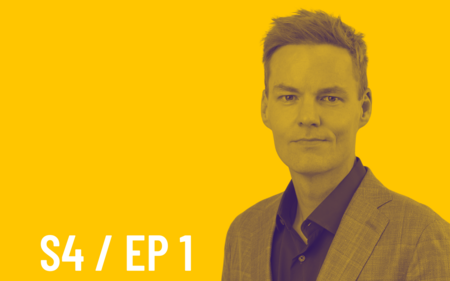
podcast
The Quantum Health Effect: A Behind-the-Scenes Look at Brand Storytelling
January 4, 2024
John Hallock, Chief Communications Officer at Quantum Health, discusses the role CEOs play in PR, what a strategic marketing communications plan should include, and leading …
Read More →
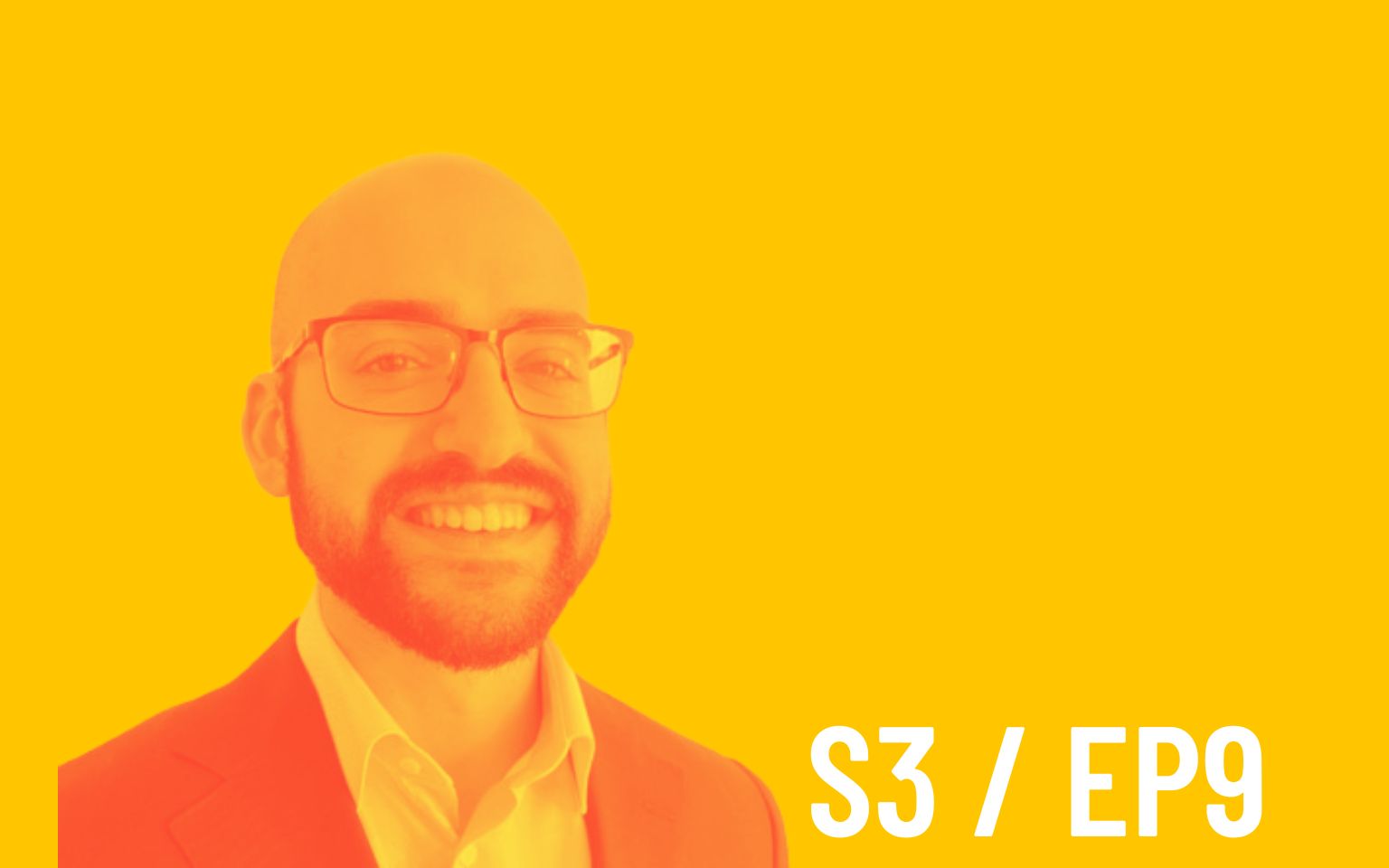
podcast
Why AI is Not Coming for Your Job, the Control Freak Buyer Persona and a Bias for Specialist Agencies
September 20, 2023
Our guest Joe Zappa and host Kriste Goad dive into the measurability of content marketing, AI for marketers, why you should never work with a …
Read More →
Want to be a guest on a future episode?
Share your thoughts directly with our show host, Kriste Goad.

